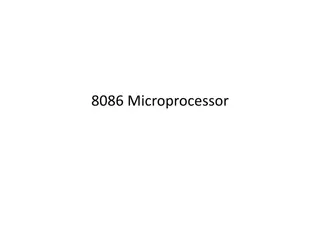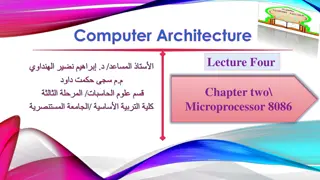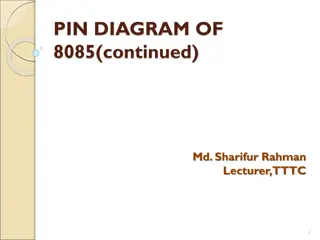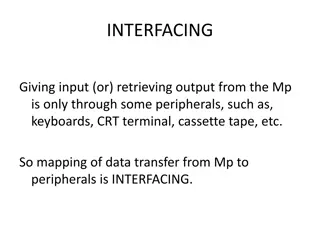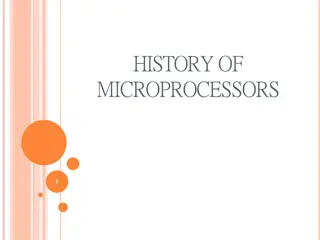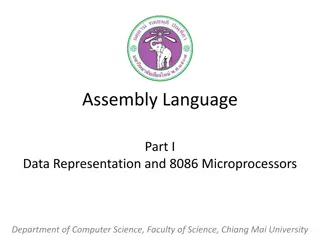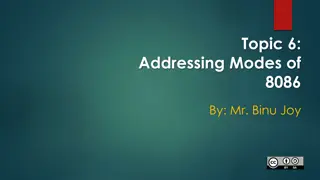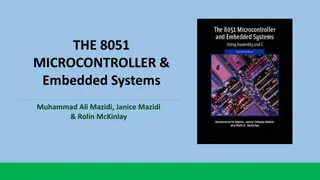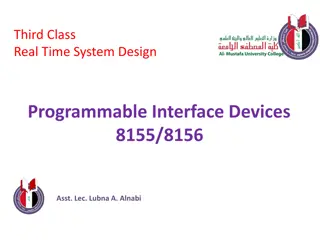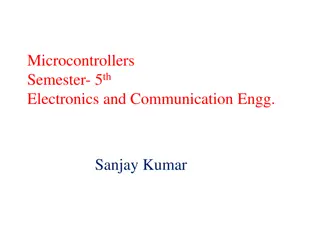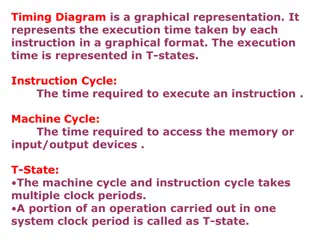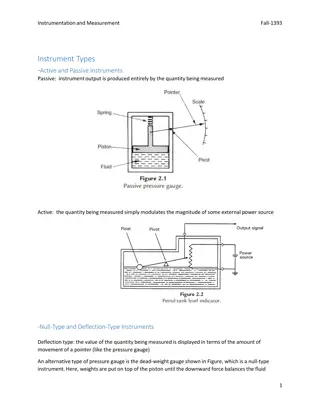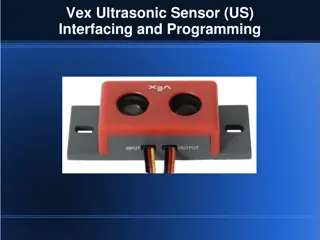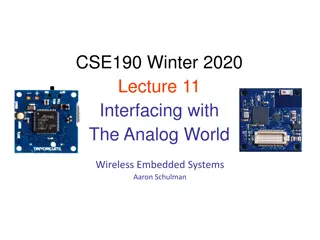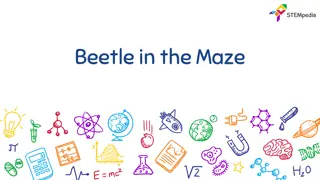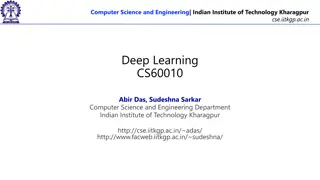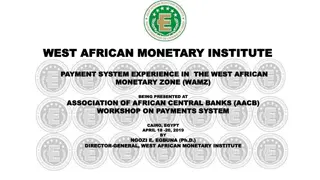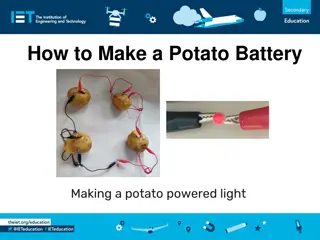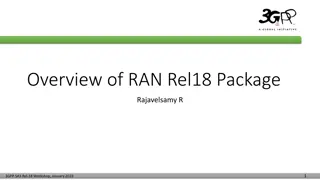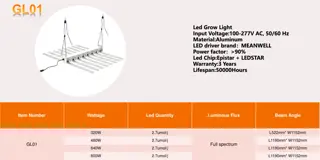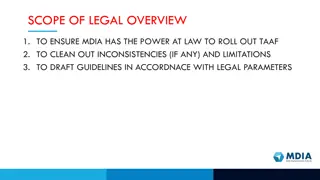Interfacing the LED with 8086 Microprocessor - JEPPIAAR INSTITUTE OF TECHNOLOGY
Explore the process of interfacing an LED with the 8086 Microprocessor at JEPPIAAR INSTITUTE OF TECHNOLOGY. Learn about the 8086 Microprocessor, its features, Trainer Board, and the steps involved in the LED interfacing. Discover the internal architecture and operation of the 8086 Microprocessor through this informative presentation.
Download Presentation

Please find below an Image/Link to download the presentation.
The content on the website is provided AS IS for your information and personal use only. It may not be sold, licensed, or shared on other websites without obtaining consent from the author. Download presentation by click this link. If you encounter any issues during the download, it is possible that the publisher has removed the file from their server.
E N D
Presentation Transcript
JEPPIAAR INSTITUTE OF TECHNOLOGY Self-Belief | Self Discipline | Self Respect Department of Electronics and communication Engineering Subject Name : MICROPROCESSOR AND MICROCONTROLLER Presentation Title: INTERFACING THE LED USING 8086 MICROPROCESSOR Team Members: Students Name Reg.No: 1. TONIE RAALPH .C 210617106081 2. ALWIN REVANTH.P 210617106007 3. KRISHNA KUMAR.S 210617106050 4. SANGAVI.L 210617106070 5. SURYA PRABHA.S.V 210617106078
OBJECTIVE: Know that how to work a 8086 microprocessor Show the different parts of a 8086 microprocessor internal architecture
CONTENTS INTRODUCTION 8086 TRAINER BOARD LED(light emitting diode) INTERFACING LED INTERFACING LED WITH 8086 PIN ASSIGNMENT WITH 8086 CIRCUIT DIAGRAM ASSEMBLY PROGRAM TO ON AND OFF LED USING 8086
INTRODUCTION 8086 MICROPROCESSOR: 8086 microprocessor is the enhanced version of 8085 microprocessor. It was designed by Intel in 1976. The 8086 microprocessor is a 16-bit, N-channel, HMOS microprocessor. Where the HMOS is used for "High-speed Metal Oxide Semiconductor". 8086 is built on a single semiconductor chip and packaged in a 40-pin ICpackage. The type of package is DIP (Dual Inline Package). 8086 uses 20 address lines and 16 data- lines. It can directly address up to 220 = 1 Mbyte of memory It consists of a powerful instruction set, which provides operation like division and multiplication very quickly.
Features of 8086 Microprocessor: 1. To improve the performance of this microprocessor there are two stages of pipelining, which are fetching & execute stage. 2. The fetch stage can transfer the data in 6 bytes of instructions and stored in a line 3. The execute stage will execute the instructions 4. The 8086 microprocessor consists of 2900 transistors and it has 256 vectored interrupts 5. It is the first 16-bit processor with 16 bit ALU & register, internal data bus and 16-bit external data bus.
8086 TRAINER BOARD: PS- TRAINER-8086 microprocessor trainer kit is proposed to smooth the progess of learnng and developing designs of microprocessor from intel. It has the facility to connect pc s 101/104 keyboard, to enter the user program in assembly languages. User verifies the program through LCD or PC , user friendly filmware confirms facilitating the beginners learns operations of a microprocessor quickly. LED ( light emitting diode): light emitting diodes is the most commonly used comp[onents, usually for displaying pins digital states. Typical uses of LEDs include alarm devices, timers and confirmation of user input such as a mouse click or keystroke.
INTERFACING LED: fig.1 shows how to interface the LED to microprocessor. As you can see the anode is connected through a resister to GND & the cathide is connected to the microprocessor pin. So when the port pin is HIGH the LED is OFF 7 when the port pin is LOW the LED is turned ON.
INTERFACING THE LED WITH 8086: we now want to flash a LED in 8086 trainer boarde. It works by turning ON a LED & then turning it OFF & then looping back to START. However the operating speed of microprocessor is very high. PIN ASSIGNMENT WITH 8086:
CONCLUSION: With the output different input output modes and control word format has been studied in this experiment.
REFERENCE: Dougles v hall,microprocessor and interfacing.new delhi:tat mc graw hill pvt.ltd.revised second edition 2010. Rk sharma, a low cost seven display system ,IET radio and electronic engineer,vol.41.pp.223-224 may 1971.


